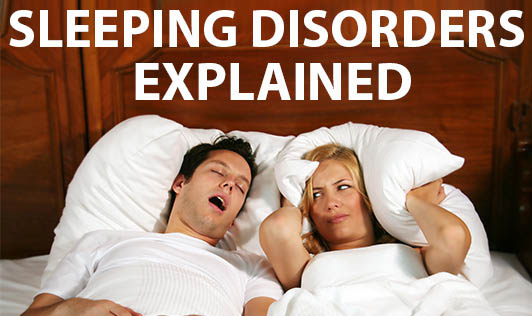Sleeping Disorders Explained
- 59 months ago
In order for a human being to live healthily there are some body requirements that need to be fulfilled on a daily basis. One of these requirements is sleep. Our body greatly benefits from a restorative sleep. An example of one of the wonders achieved through proper sleep includes tissue repair. This is possible because during one's sleep, the body is rested and no excess activity takes place.
This means while tissues are not being used, they are being repaired by re-generative processes in the body. This indicates that people need to get adequate amount of sleep in order to prevent their bodies from wasting away. When a person does not sleep well one night, s/he begins to experience fatigue. It usually happens due to incomplete repair of material used in the body. In addition to this it should also be noted that the human mind never really rests; it goes into different states of operation, some of which are great mysteries that are still being investigated.
However, there are many things that are also known about the working of the human mind and the sleep patterns and behavior that are associated with it.
Few of the sleep disorders that are known include;
* Obstructive Sleep Apnea (OSA)
* Narcolepsy
* Periodic Limb Movements (PLM)
* Restless Legs Syndrome (RLS)
* Insomnia
* Parasomnia
Obstructive Sleep Apnea (OSA)
This disorder is quite well known and is commonly known as snoring. Around 3 to 8 percent people suffer from this sleep disorder. More men than women are affected with Obstructive Sleep Apnea. As the name implies, an obstruction occurs in the upper breathing tract. When this occurs during one's sleep, it is obvious that oxygen supply through breathing does not take place. This can prove to be dangerous. However, when this natural blockage takes place, which may last up to 90 seconds, a shot-circuit kind of action is set off, and that is when the snoring sound takes place. It is this snoring sound which indicates the air flow to and from the lungs still continues.
Narcolepsy
This disorder is known to plague 5 people out of 100,000. The cause of this disorder is largely unknown. Common symptoms of this disorder include:
* Extreme sleepiness
* Cataplexy
* Hypnagogic hallucination in extreme conditions
* Sleep paralysis
* Automatic behavior
* Lack of concentration
* Problems at work or school
Periodic Limb Movements (PLM)
In this condition, Jerking of the legs takes place in the form of a rhythm. Similar to this is the Restless Legs Syndrome (RLS) in which the limbs move as though one is crawling. Between 2 and 5 percent people suffer with this condition. The symptoms for it include:
* A "jumpy" feeling in the legs
* Discomfort during sleep
* Incomplete sleep and non-refreshed feeling
* Sleepiness throughout the day
Though there are a significant number of people that suffer with this disorder, treatment for it helps atleast 90% of those affected.
Insomnia
This is a serious condition that impacts 9 percent of people. It is a disorder that can last for any length of time. The following conditions are known to be associated with this disorder:
* Stress
* Psychiatric conditions
* Smaller sleep problems/ disorders
* Drugs
* Interaction of Medication
When one suffers from insomnia everyday life goes for a toss. This is because one generally feels a lot weaker. Accidents are most likely to occur because of being tired and not being able to focus on daily work. Around seventy percent people suffering with insomnia improve their condition after having been treated.
Parasomnia
This is a condition that includes various disruptive conditions associated with sleep. Some of these are as follows:
* Walking while sleeping
* Pavor nocturnus or “night terror” or “sleep terror”
* Severe Nightmares
* Seizures of varying intensities
* Violent movement during sleep
* Rapid Eye Movement (REM) disorder
In some cases when one moves too vigorously s/he may be injured. There may also be a tendency to eat excessively while asleep and disturb people around (also known as Sleep Related Eating Disorder or SRED). This condition can be easily detected and treated too.




